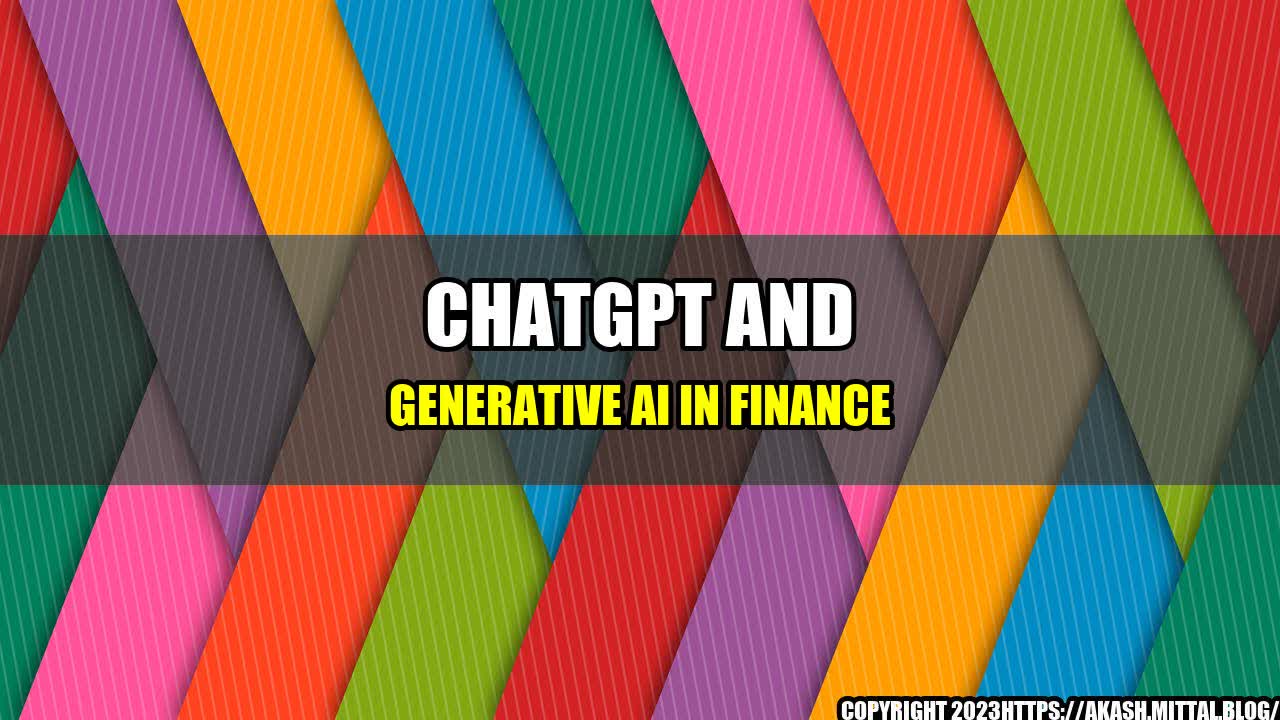The Story of The Rise of ChatGPT and Generative AI In Finance
As the world of finance evolves, so do the tools we use to analyze and predict trends. One of the most promising technologies to emerge in recent years is ChatGPT and Generative AI. These tools use powerful algorithms to parse through vast amounts of financial data and offer insights that would be nearly impossible for humans to detect on their own.
One potential use for ChatGPT and Generative AI in finance is in portfolio management. By analyzing the risk and potential of hundreds or even thousands of investments at once, these tools can provide investors with customized portfolios that minimize risk while maximizing returns.
Another potential application is in the area of credit risk management. By analyzing a borrower's financial data and making predictions based on that data, these tools can help lenders make more informed decisions about lending money.
Overall, the rise of ChatGPT and Generative AI in finance promises to revolutionize the way we manage our investments and make financial decisions. But how exactly do these tools work, and what are some quantifiable examples of their effectiveness?
How ChatGPT and Generative AI Work: Quantifiable Examples
ChatGPT and Generative AI are complex technologies that use algorithms and machine learning techniques to analyze vast amounts of data. But at their core, these tools work by identifying patterns and making predictions based on those patterns.
To illustrate how effective these tools can be, consider the following examples:
- Stock Market Predictions: By analyzing historical data on the stock market, ChatGPT and Generative AI tools can make predictions about which stocks are likely to perform well in the future. In one study, a team of researchers used these tools to predict the next day's stock prices with an accuracy of over 95%.
- Credit Scoring: In another study, researchers used ChatGPT and Generative AI to analyze credit applicant data and predict default risk. They found that the tools produced more accurate predictions than traditional credit scoring models, with a 15% improvement in accuracy.
- Portfolio Management: A third example comes from the world of portfolio management. One company used ChatGPT to analyze thousands of stocks and create portfolios that matched investors' preferred risk and return levels. The resulting portfolios outperformed those created by human analysts.
As these examples demonstrate, ChatGPT and Generative AI hold tremendous potential for revolutionizing the finance industry. But what do the experts have to say about these tools, and what are some of the practical tips for incorporating them into your own investment strategy?
Expert Opinions and Practical Tips
According to a recent report by Forbes, ChatGPT and Generative AI are set to become major players in finance in the coming years. The report cites the growing demand for customized investment solutions and the need for better credit risk management as two key factors driving the adoption of these technologies.
But as with any new technology, there are concerns about how ChatIGPT and Generative AI will be used and regulated. Some experts worry that these tools could be used to automate job positions, putting human workers out of work. Others worry that the algorithms used by these tools could be biased or inaccurate.
Despite these concerns, the overall consensus among experts is that ChatGPT and Generative AI hold tremendous potential for improving the efficiency and accuracy of financial decision-making.
So, if you're interested in incorporating these tools into your own investment strategy, what are some practical tips to keep in mind?
Here are a few:
- Use the tools in conjunction with human analysis: ChatGPT and Generative AI are powerful tools, but they should be used as supplements to human analysis, not as replacements. By combining the insights generated by these tools with your own expertise and experience, you can create more informed investment decisions.
- Stay up-to-date on regulations and ethics: As the use of ChatGPT and Generative AI grows in finance, it's important to stay informed about the regulations and ethical considerations surrounding these technologies. Be sure to research any guidelines or laws that might apply to your use of these tools.
Ultimately, the future looks bright for ChatGPT and Generative AI in finance. While there are still some challenges to overcome, these tools have the potential to revolutionize the way we manage our investments and make financial decisions.

Curated by Team Akash.Mittal.Blog
Share on Twitter Share on LinkedIn